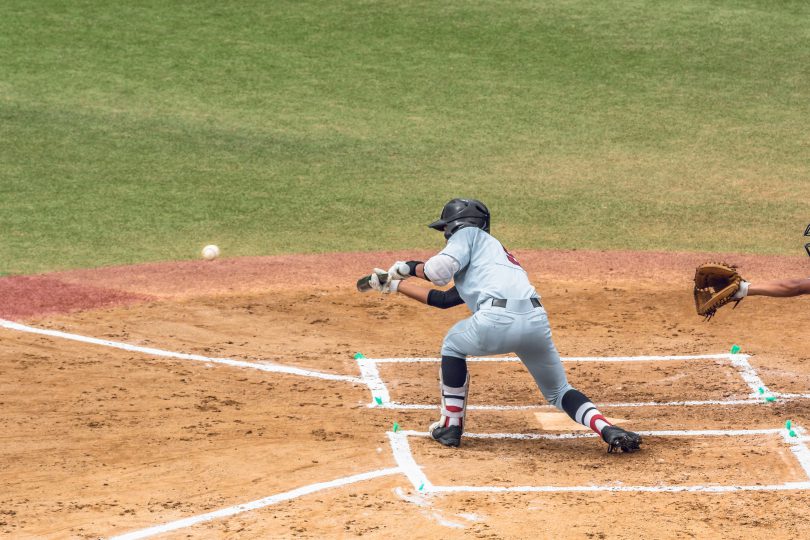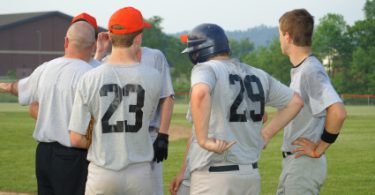The Situation:
Runners on 1st and 2nd, no outs in the top of the 8th. The game is tied at 5.
The Play:
The defense is expecting the bunt on the 0-0 count and it looks like that’s what they will get. The pitcher starts his delivery and the batter squares to bunt. The third baseman sees the hands drop into the bunting positing and starts to crash, knowing that the bunt should be directed his way. The runner on second, who had entered his secondary as the pitcher delivered home, sees the empty base at 3rd and takes off running. The runner at 1st follows his lead. The pitch comes in and the batter pulls back the bunt.
The Outcome:
The breaking ball curves into the strike zone for a called strike. The catcher receives it, pops up and looks to third. Under normal circumstances, the runner would be thrown out easily with such a late jump, but the third baseman can’t get back to the bag. By the time the catcher looks to second, it’s too late to make a throw there as well. Without sacrificing the out on the bunt, the offense now as 3 opportunities to get the two runners home and take the lead.
What Went Wrong:
It’s clear to see that the third baseman charges too far and too soon. He is right to expect the bunt to be laid down in his direction, but if there is no crash or wheel play on, he can’t leave home too early or over-commit. When he does that, he leaves the door open for exactly what happened. It’s a great read by the runner at second, who saw the mistake and took full advantage.
Instead of charging when the batter shows bunt, the third baseman has the difficult job of monitoring the runner at second and judging the bunt. The pitcher will have coverage responsibilities to the third base side, so the third baseman must see the bunt down and charge only if it is bunted so firm that the pitcher will not be able to make the play. By waiting to charge, he prevents the second base runner from stealing uncontested and gives the defense a chance to get the lead runner at third on a lousy bunt. The third baseman must know all of these bunt responsibilities like the back of his hand before this situation even presents itself. The error is a costly mental mistake and he has no one but himself to blame for his lack of preparation. Be prepared, know the situation, and think the game.







